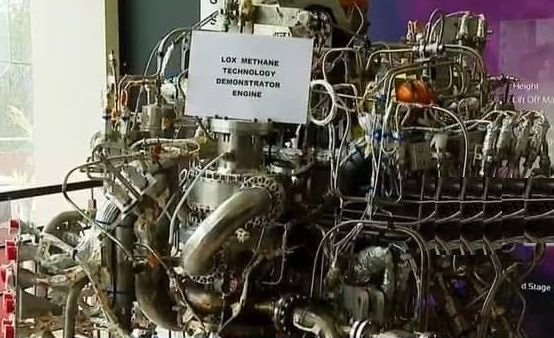ISRO Successful Tests 20-ton LOX-Methane Engine Demonstrator, Paving the Way for Future Launch Vehicles

Space News ,India :- In a significant stride towards achieving cutting-edge space propulsion technology, the Indian Space Research Organization (ISRO) has successfully developed a 20-ton LOX-Methane Engine Demonstrator, completing 6-8 hot tests. The test facilities, specifically designed for extensive evaluations, have been instrumental in the engine's progress. Additionally, ISRO is actively engaged in developing technology for a 100-ton LOX-Methane engine, suggesting a promising future for advanced space exploration capabilities. Notably, the engine is anticipated to be reusable up to 20 times, showcasing a cost-effective and sustainable approach.
ISRO's commitment to staying at the forefront of global space exploration is evident in its pursuit of two LOX-Methane engines that utilize liquid oxygen as the oxidizer and methane as the fuel. Liquid oxygen (LOX), known for its role as the oxidizer in the first liquid-fueled rocket in 1926, is a key component of ISRO's future launch vehicles.
The LOX/Methane propellant combination is a strategically chosen solution, offering superior specific impulse performance and operational advantages such as storability, low toxicity, and cost-effectiveness. ISRO recognizes the potential for in-situ resource utilization during inter-planetary missions, further motivating the development of LOX/Methane engines.
Methane, hailed as the space fuel of the future, can be synthesized with water and carbon dioxide in space, adding to its appeal. Two concurrent projects are underway at ISRO's Liquid Propulsion Systems Centre, focusing on converting an existing cryogenic engine and developing a smaller 3-ton thrust engine with an electric motor.
While ISRO remains tight-lipped about the official status of these projects, the potential shift towards LOX-Methane indicates a departure from the current use of hydrazine-based fuels. The move is substantiated by the advantages of methane, including its non-toxic nature, higher specific impulse, easy storability, and suitability for in-space synthesis.
Comparatively, hydrazine-based fuels, like Unsymmetrical Di-Methyl Hydrazine, currently used by ISRO, are deemed highly toxic and carcinogenic. Globally, there is a growing push to ban hydrazine. The LOX-Methane engines also hold the promise of in-situ resource utilization, particularly on planets like Mars with abundant water sources.
The global trend towards LOX-Methane propulsion is evident, with the Chinese already having a working engine, and SpaceX exploring methane-fueled rockets with its Raptor engine. Meanwhile, Mumbai-based start-up Manastu Space is developing a propulsion system using Hydrogen peroxide as fuel, presenting an alternative approach to traditional rocket fuels.
As the space industry continues to evolve, new rocket fuels such as Ammonium di Nitramide in Europe and Hydroxyl Ammonium Nitrate in the US are emerging, promising cost-effective solutions for satellite deployment and space research. The ongoing developments indicate a dynamic landscape in space propulsion, with ISRO actively contributing to the forefront of innovation.


